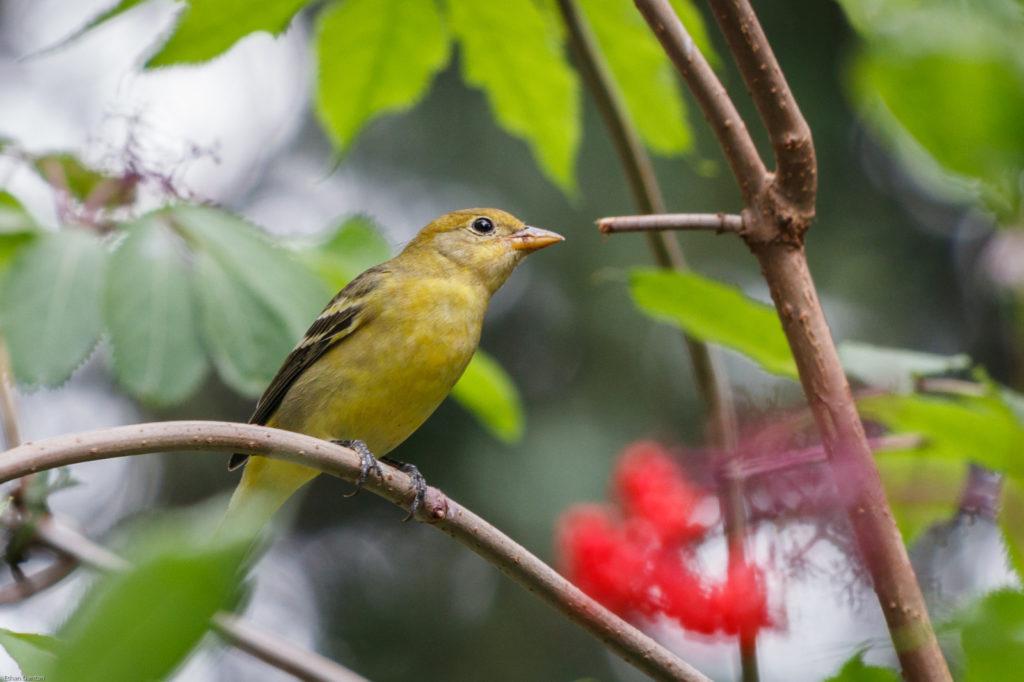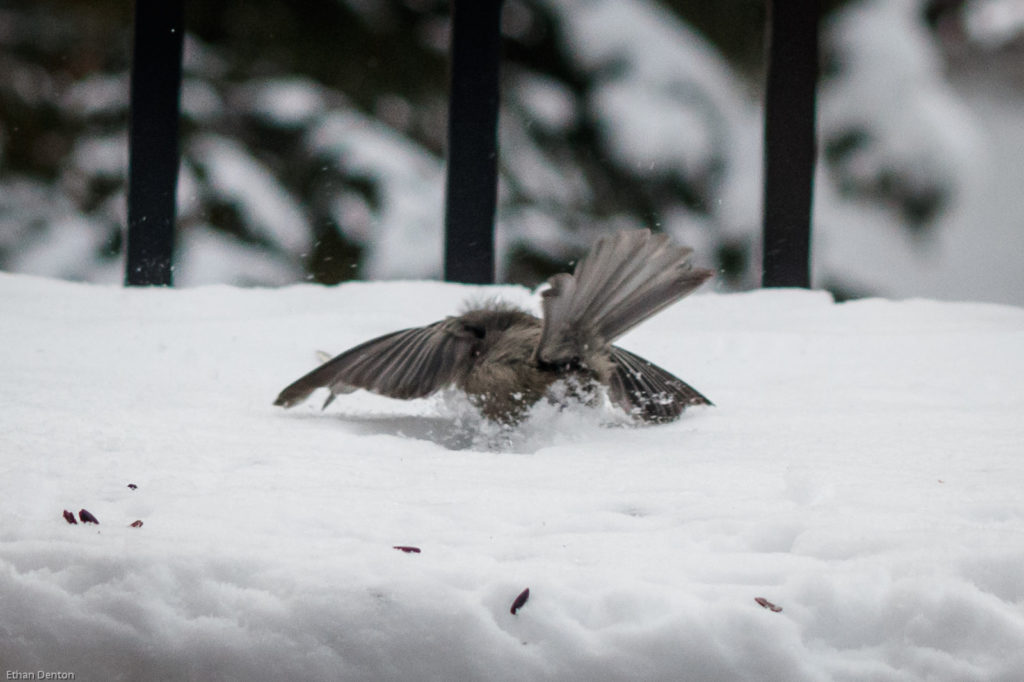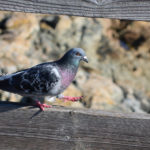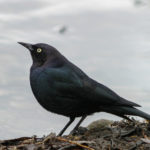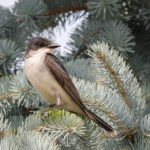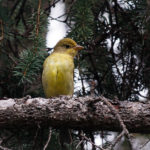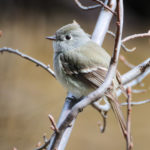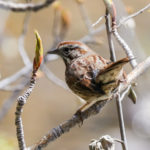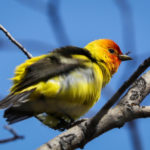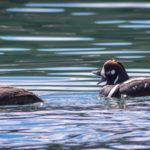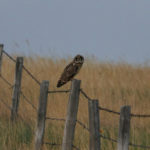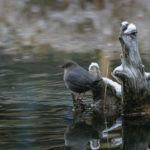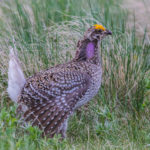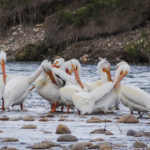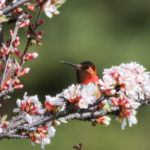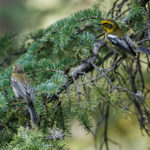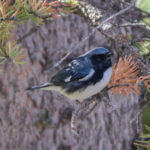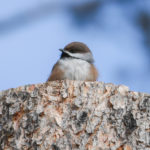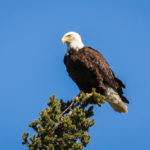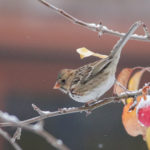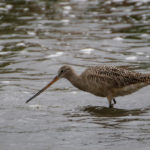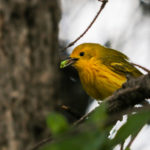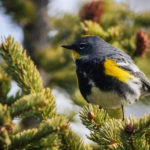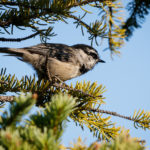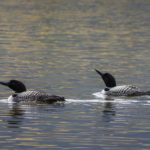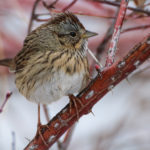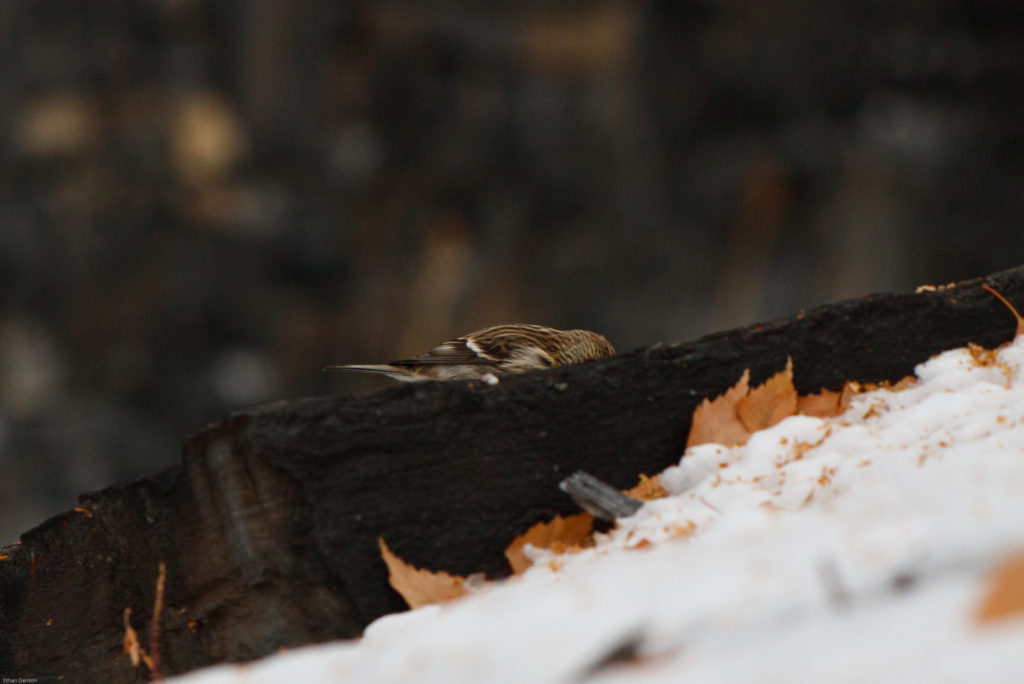 Does anybody have a guess for this camera shy fellow? Last week’s bird was a Mountain Chickadee.
Does anybody have a guess for this camera shy fellow? Last week’s bird was a Mountain Chickadee.
Category: Passerines
Birding Maitland – the Mysteries of the One Thousand Islands
It was perhaps the most uneventful trip to Ontario to date, in terms of birds. Previous visits have resulted in sights such as breeding Prothonotary Warbler, Green Heron and Bobolink. This time, however, we were not headed anywhere like Long Point, or even as far as Toronto. While this did not prevent us from seeing some good birds, it did mean that we wouldn’t be watching Blue-winged Warblers and Scarlet Tanagers.
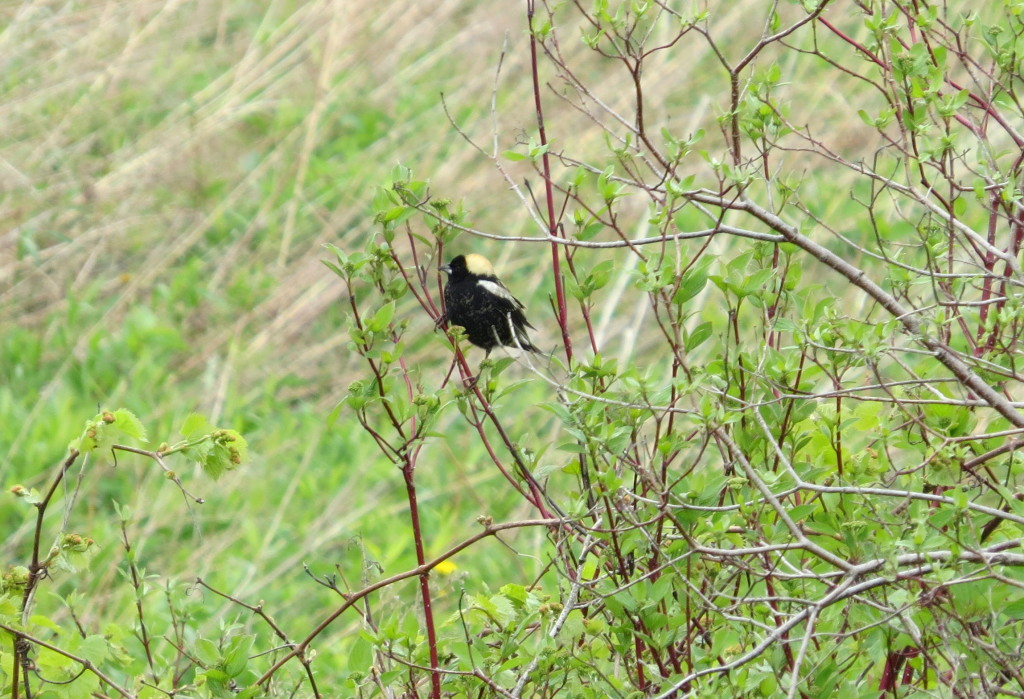
We arrived in Ottawa airport at 11:00 PM eastern time, sleeping at last at around two AM. This late night arrival gave my Dad and I the opportunity to slip out to a nature preserve while the others slept in the following morning. The South access was barren, with naught but a Turkey Vulture seen, but the North was more productive – 25 species in a couple of hours. Standout performers included four Blue-headed Vireos, an Eastern Towhee, some Eastern Pheobes and a Rusty Blackbird.
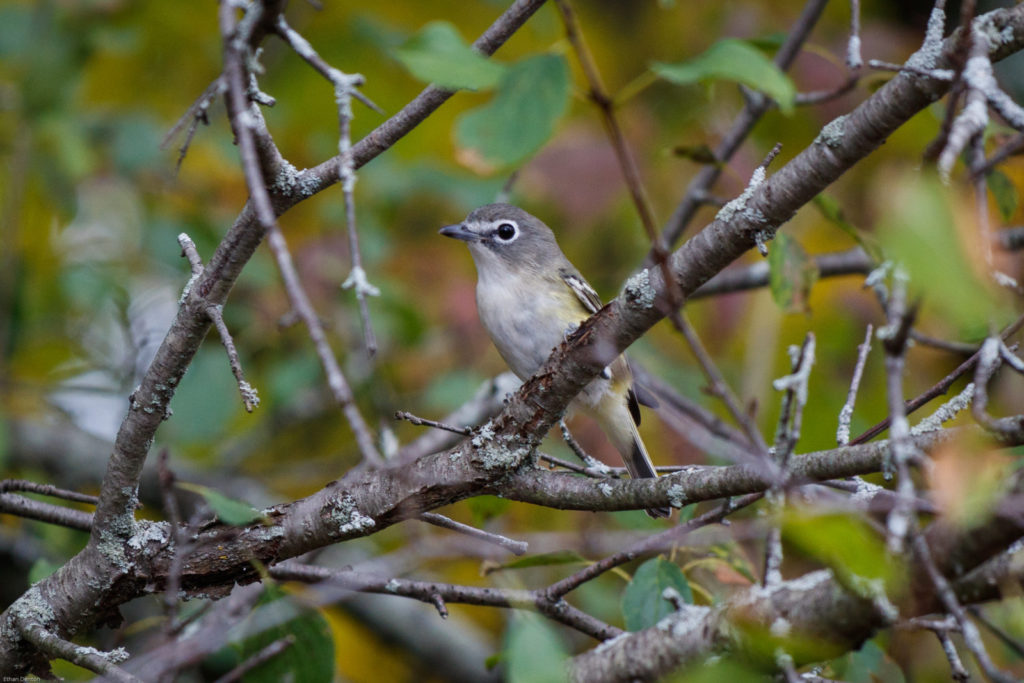
The next few days were spent in Maitland and Brockville. Cormorants and Ring-billed Gulls remained prominent throughout, but species such as Grey Catbird and Lincoln’s Sparrow mixed among Northern Cardinals and ubiquitous Blue Jays to exhibit a dazzling spectrum of colours. Hooded and Common Mergansers swam with the Mallards in the river, while Turkey Vultures wheeled above.
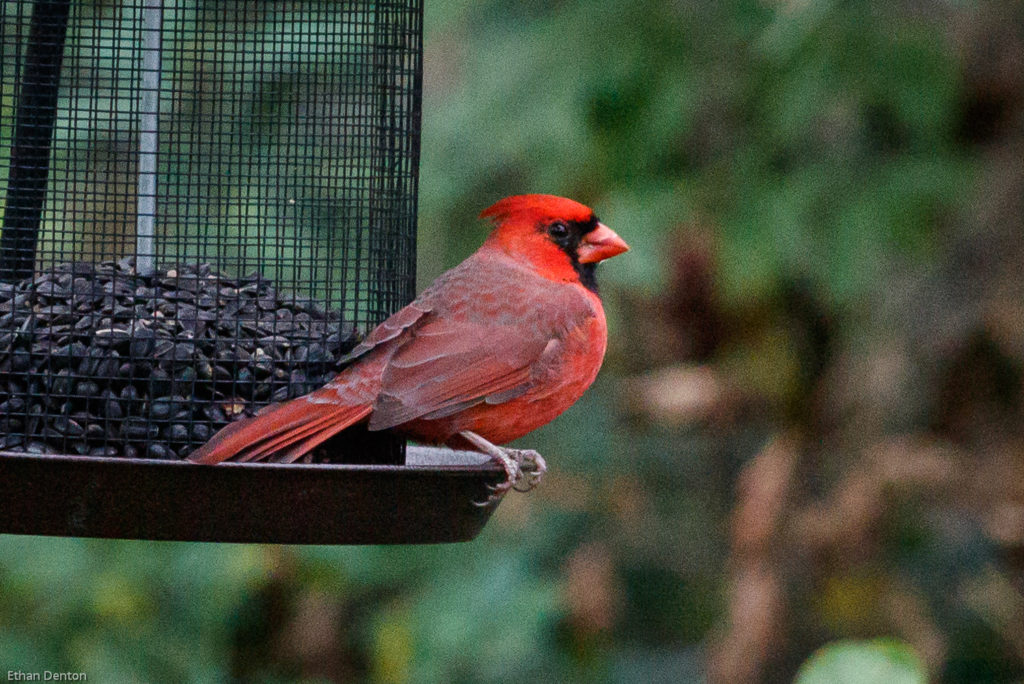
There was, all in all, a good variety of birds. While the weather did not co-operate, Red-winged Blackbirds, White-breasted Nuthatches and Black-capped Chickadees were all quite cheerful, presenting themselves in numbers throughout the trip.
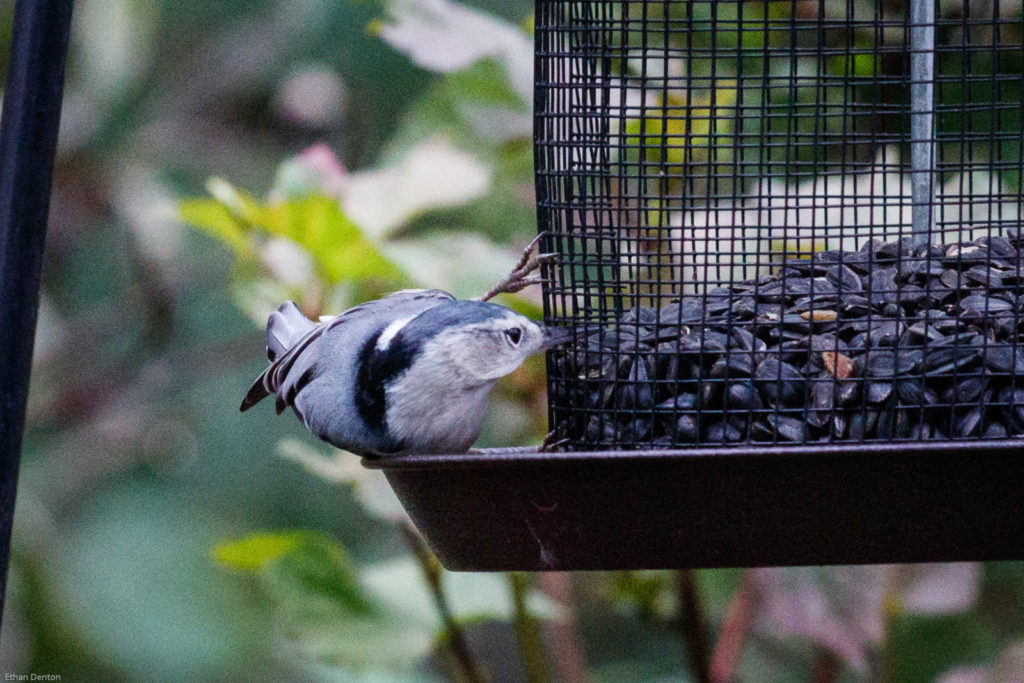
One of the biggest highlights of the time in Ontario was a boat tour of the Thousand Islands. The first bird ended up being the best – a mature Great Black-backed Gull! Not a lifer, but a Canada first and a very nice bird to see.
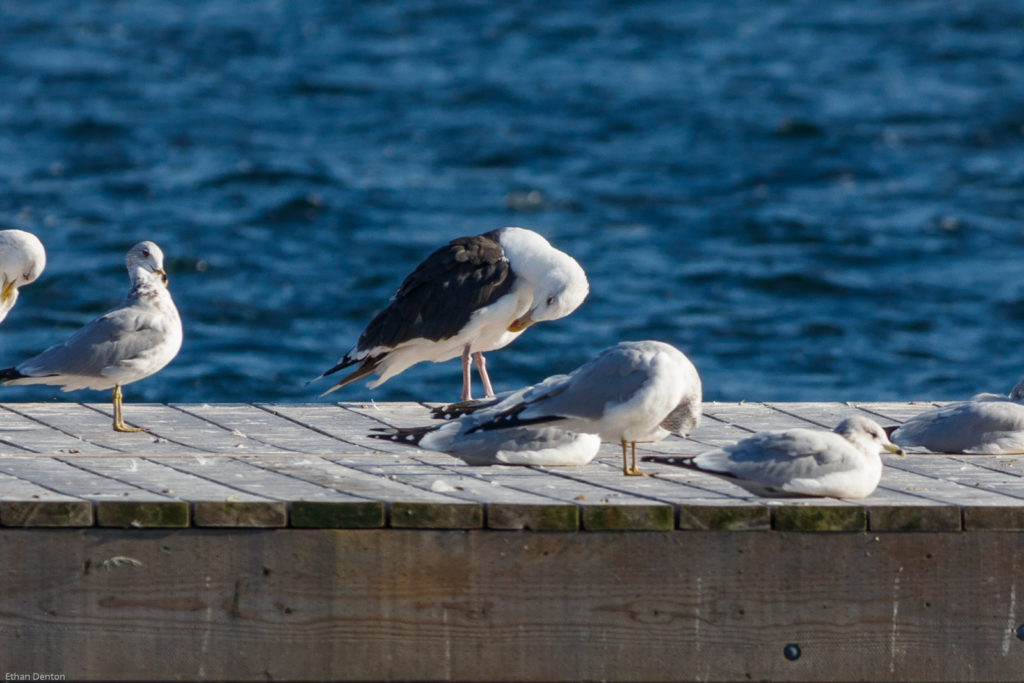
Over the course of the trip, we would see three more of these impressive birds, but the above photo is by far the best view we had of one. Thousands of Double-crested Cormorants swarmed the rocks, buoys, islands and houses while Mallards and Canada Geese littered the blue waters. I spotted a few American Black Ducks, Common Loons and Common Mergansers, but the best waterfowl of the day was a small group of six Red-breasted Mergansers flying past the ship.
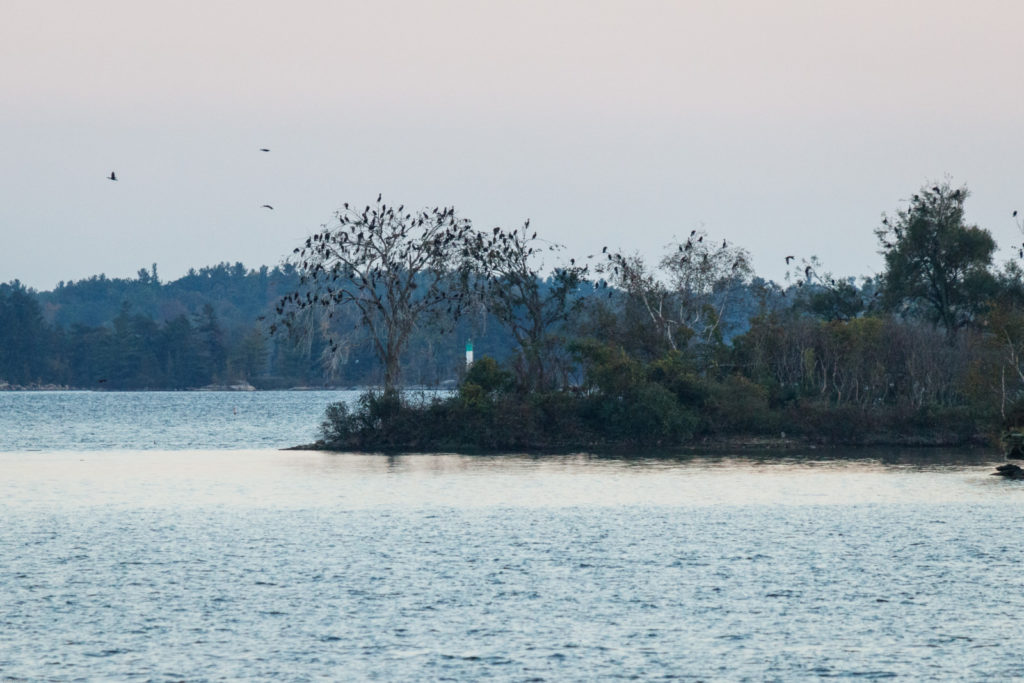
Returning in the evening light, a flock of maybe fifty Ring-billed Gulls accompanied the boat, floating on the air thrown up, effortlessly keeping pace with us almost all the way back to the docks. Naturally, I took some photos, as they were keeping beside and slightly above us, providing many excellent opportunities. My favourite shot, however, comes from when one dipped down to the second level, and I took one from above it.
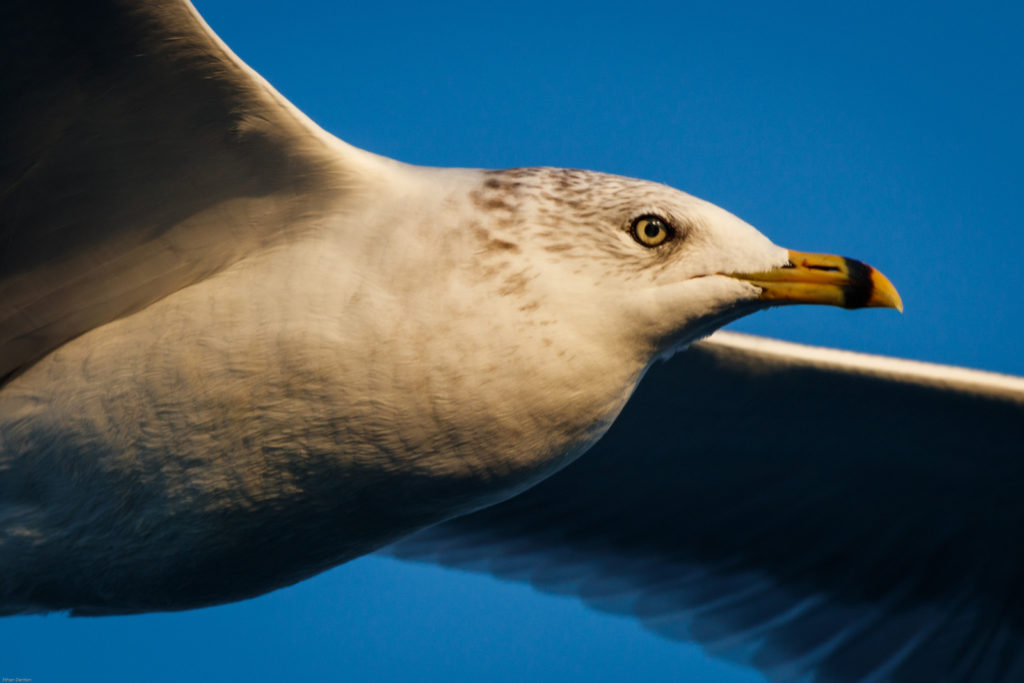
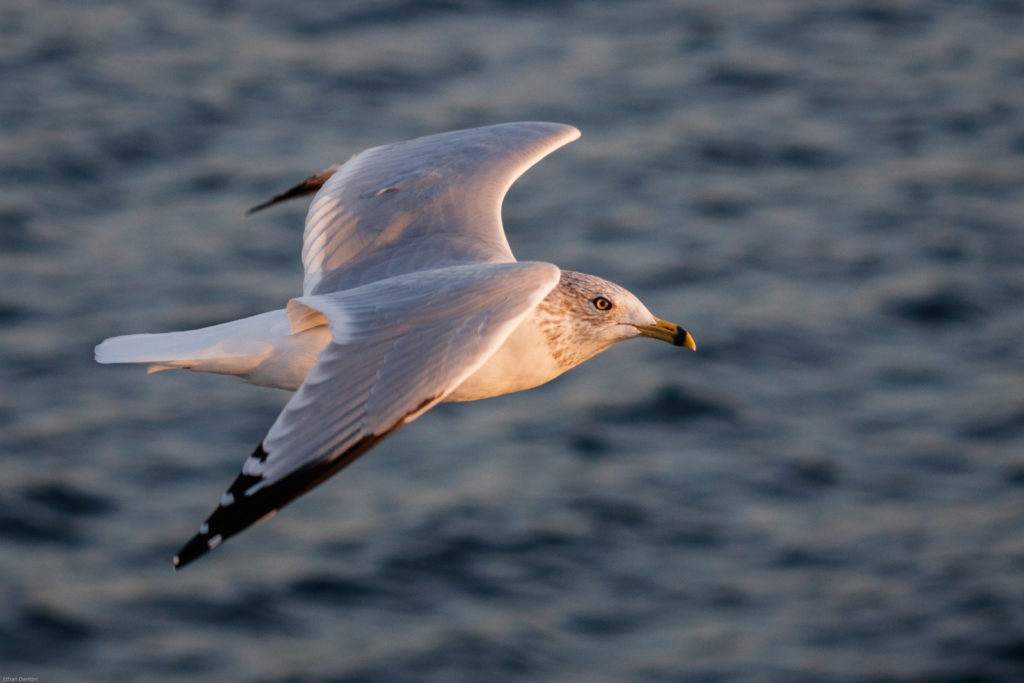
Later in the evening, they became much more bold, and even landed on the moving watercraft just a few yards away from people.
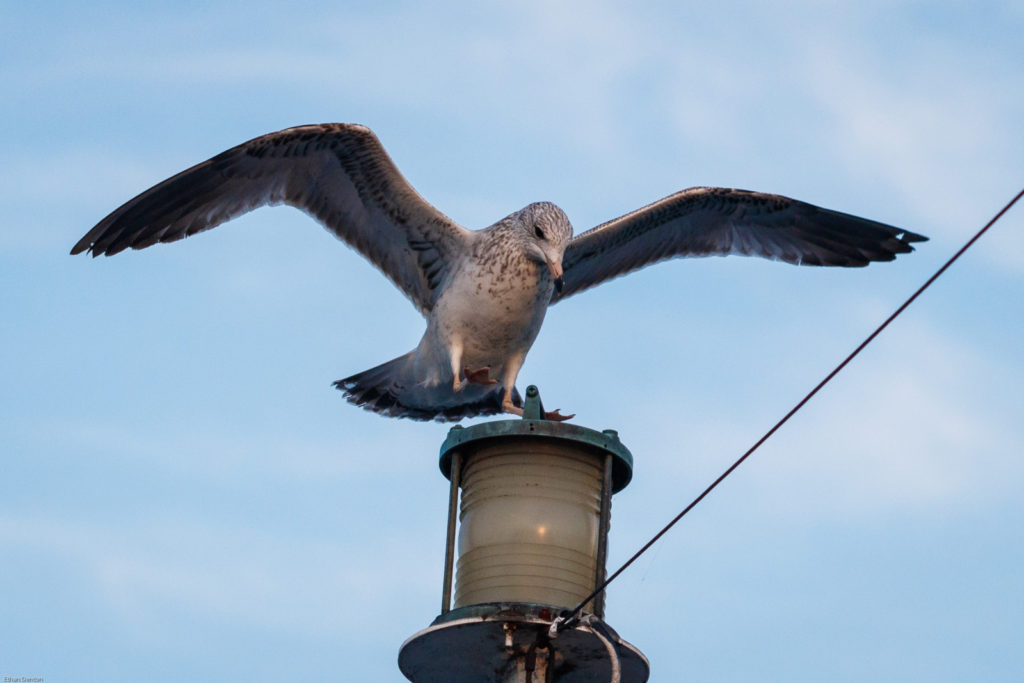
Two days later, we drove out to Arnprior, to visit a friend who’d moved from Canmore; incidentally the very same who began this site for me! On the way, we breezed by Wild Turkeys, wild Turkey Vultures, and even possible Eastern Meadowlarks – what would have been lifers, if we had stopped to confirm them. Once there, a walk around the town centre turned out the first Dark-eyed Junco of the trip, more Herring and Ring-billed Gulls and some European Starlings – dazzling birds in the right light.
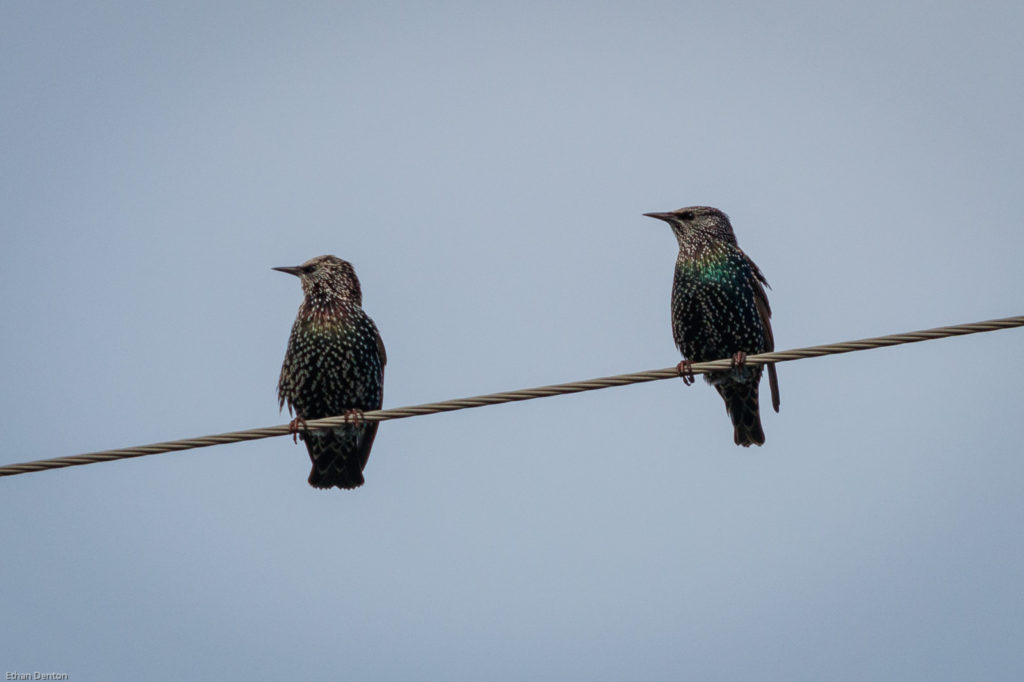
Friday morning, back in Brockville, we headed out on a non-birding expedition which nonetheless proved fruitful – so much so that we went back to the same place two days later. On both journeys, the abundance of White-throated Sparrows and icterids (blackbirds) surprised us, with over 40 individual sparrows identified. The second time, a Mourning Warbler shone out, partnering with another Blue-headed Vireo as the stars of the show.
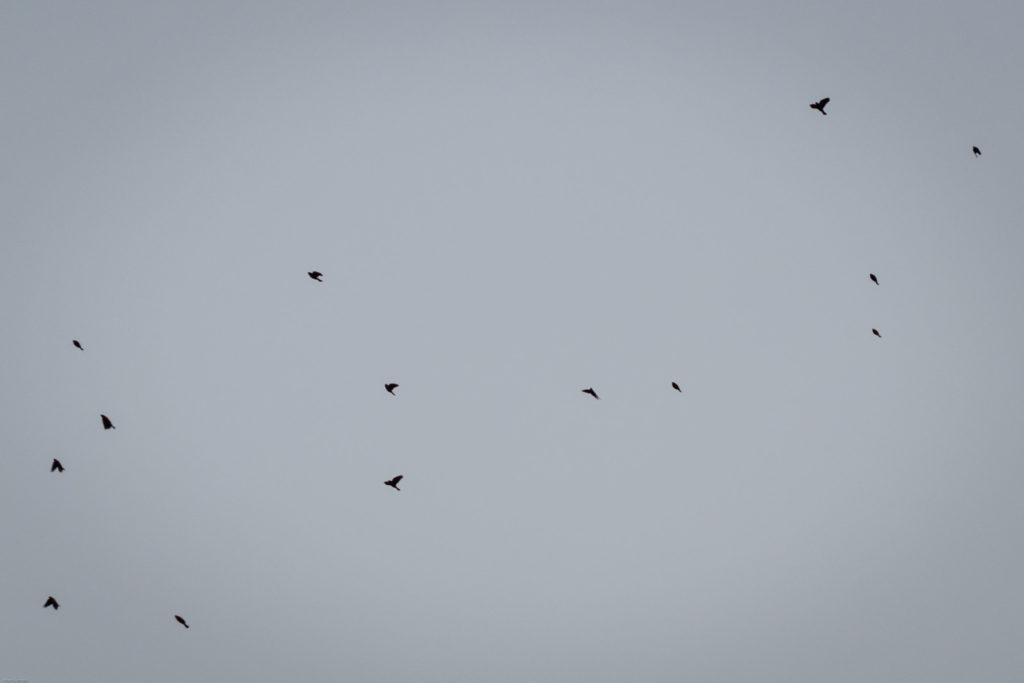
On our last day in Ontario, we visited Brockville’s most famous sight – the Brockville Railway Tunnel – an older tunnel that has been transformed to a tourist attraction – complete with loud, trashy music, no less. Still, the sight was cool, and they had excellent lighting features.

And that concluded our trip to Ontario! We boarded the plane that night, and left the land of warmth and warblers for the snow and cold of a Bow Valley October. Thanks for reading!
Feathers on Friday – Feeder Birds
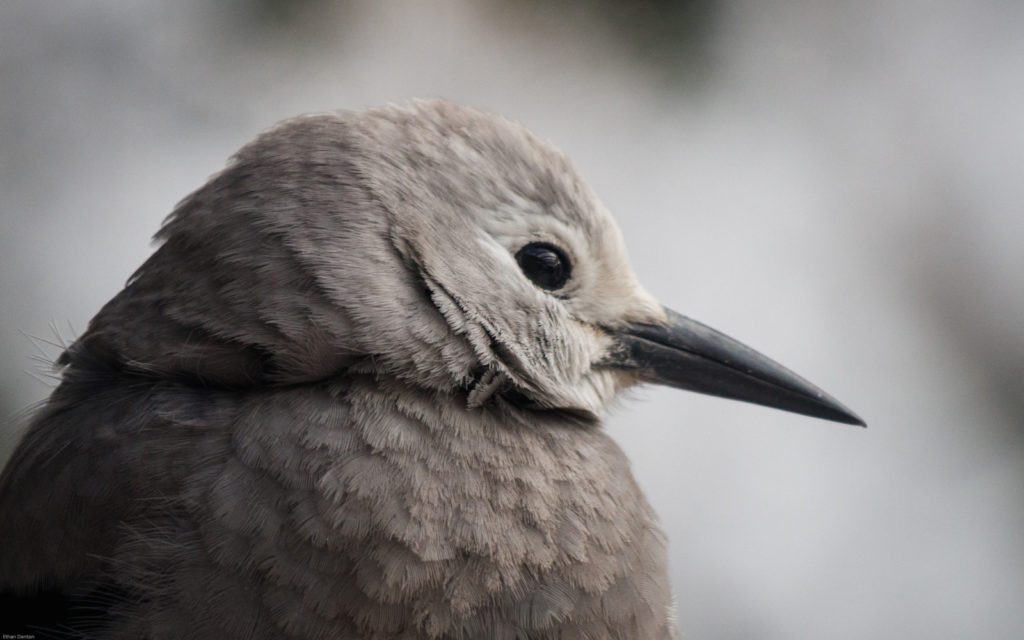 This week, I’ve been spoiled for choice for a FoF photo, due to the extravagance of the birds at my feeders. How to remedy this? Simply post three. The first is an inquisitive Clark’s Nutcracker, the second a Black-capped Chickadee and the third is a Black-billed Magpie trying to get a grip on a suet cage. Hope you enjoy them!
This week, I’ve been spoiled for choice for a FoF photo, due to the extravagance of the birds at my feeders. How to remedy this? Simply post three. The first is an inquisitive Clark’s Nutcracker, the second a Black-capped Chickadee and the third is a Black-billed Magpie trying to get a grip on a suet cage. Hope you enjoy them!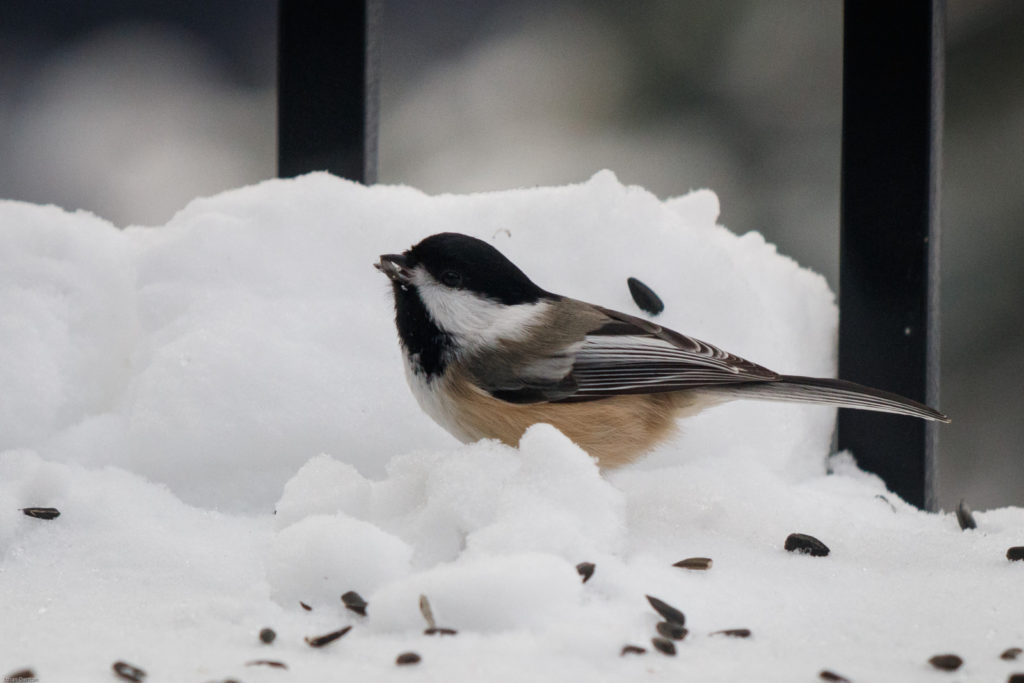
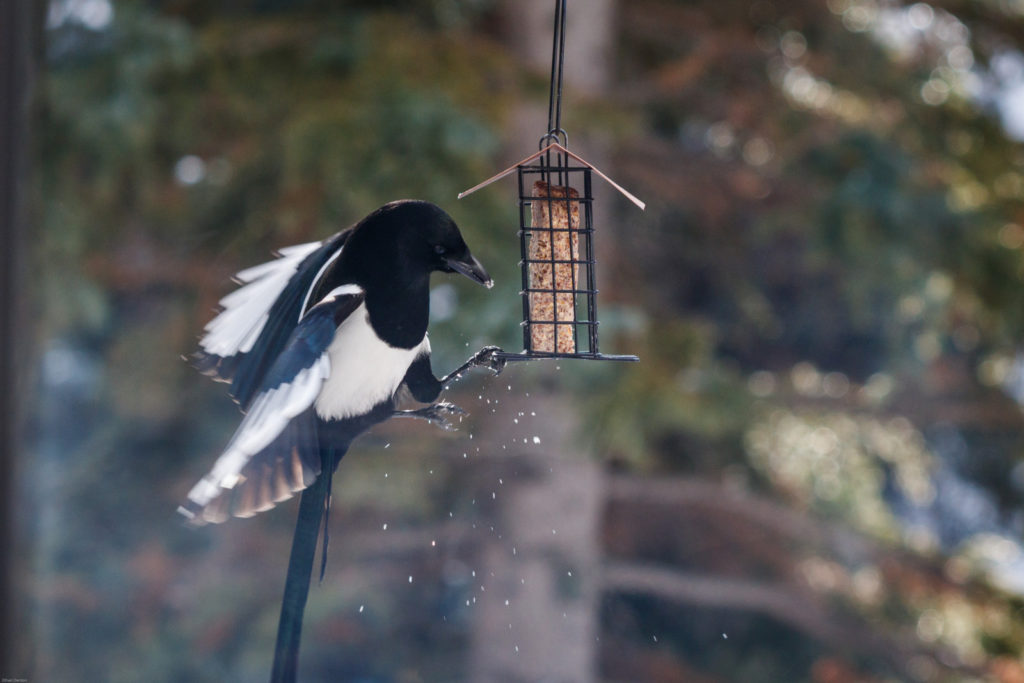
Other Feathers on Fridays:
What Bird Wednesday
Here’s an interesting shot from my feeders in the last couple of days – the bird was pusued by another, and ended up bouncing off the surface of the snow in the midst of the chase! Last week’s unidentified bird was a Spotted Sandpiper chick. Can you guess this one?
Other What Bird Wednesdays:
Trip of a Lifetime – To Central Alberta and Home Again
July 19th, 2017. We had stayed in Medicine Hat for the night, having come in from the bountiful prairies of Southern Alberta. So far the count was at 5 lifers and 2 other Alberta firsts, with other highlights including many Ferruginous Hawks, some Baird’s Sparrows and Upland Sandpipers. Now we started early, hoping for Yellow-breasted Chats and any miscellaneous rarities that might be hanging around Medicine Hat’s Police Point Park.
The first birds to greet us were Grey Catbirds. These thrushes are common throughout Alberta, but never before had I seen them in such large numbers.
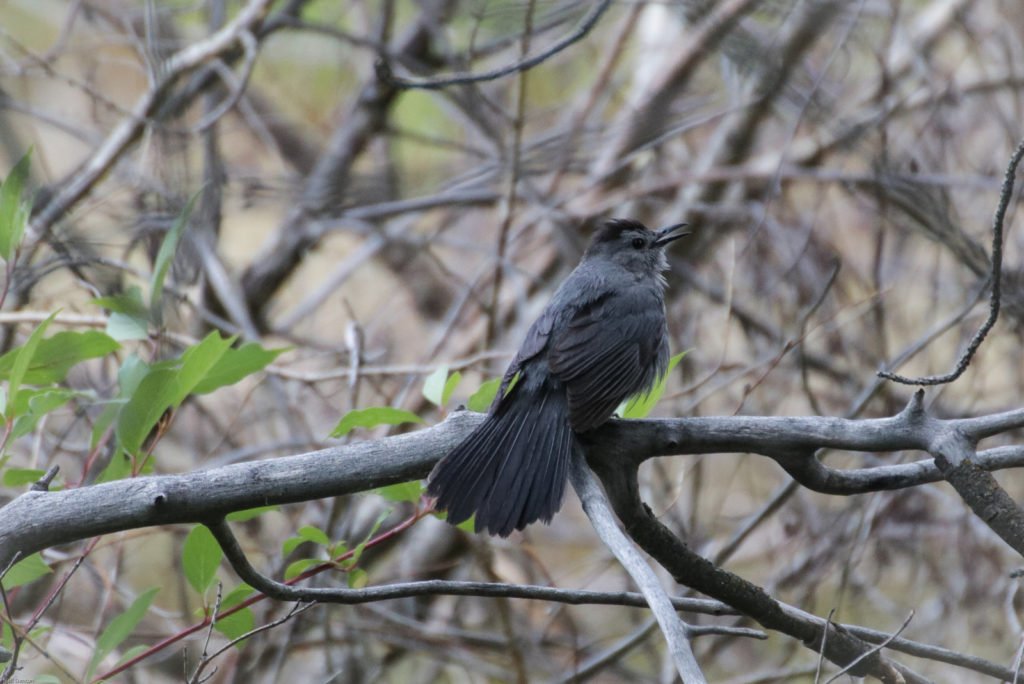
As we proceeded along the rocky pathways, the chatter of House Wrens and Flycatchers pervaded the air, and Bald Eagles soared overhead. Breaking out from the trees, we found ourselves on a large stone beach, and flying above it a —- but it was gone so fast. I had little doubt as to the identity of this mysterious bird, a medium sized white bird with a heavy black crown, but we had to relocate it to be sure. Jogging along the waterfront, we came upon an immature Bonaparte’s Gull, a Great Blue Heron and some Spotted Sandpipers, but no tern. Then, winging it’s way along the course of the river, it reappeared at a somewhat slower pace than previously.
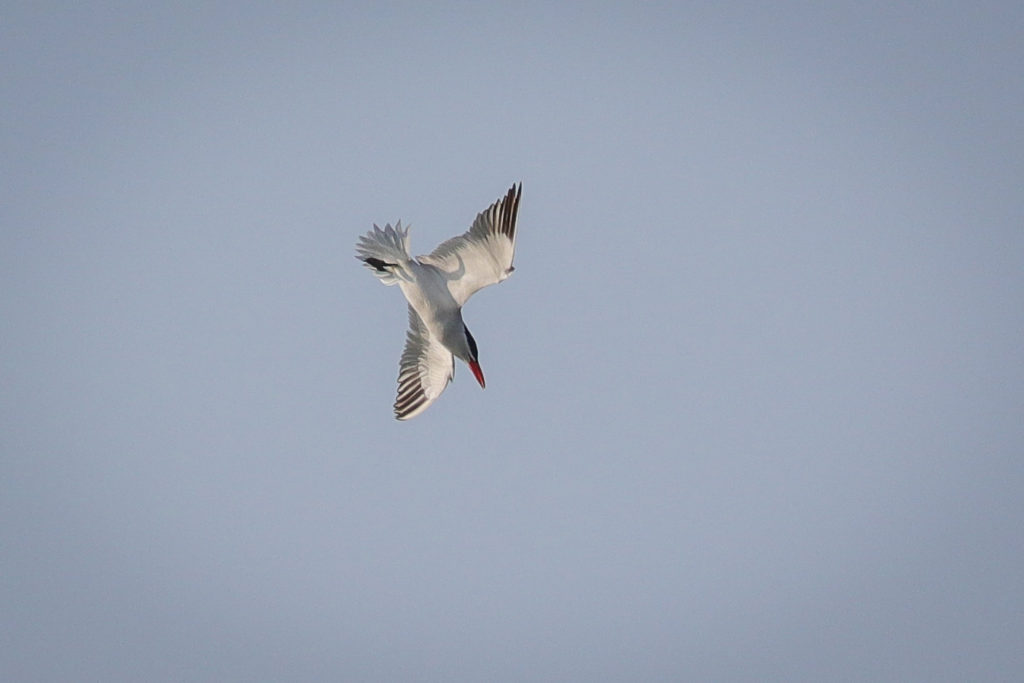
It didn’t stop, however, and the bird was gone before we knew it. Jubilantly returning to the car, we happened across a Yellow Warbler feeding its young, a pair of Mourning Doves and two Killdeer. A slightly different find was a small frog that sprung from a small cluster of vegetation onto the path.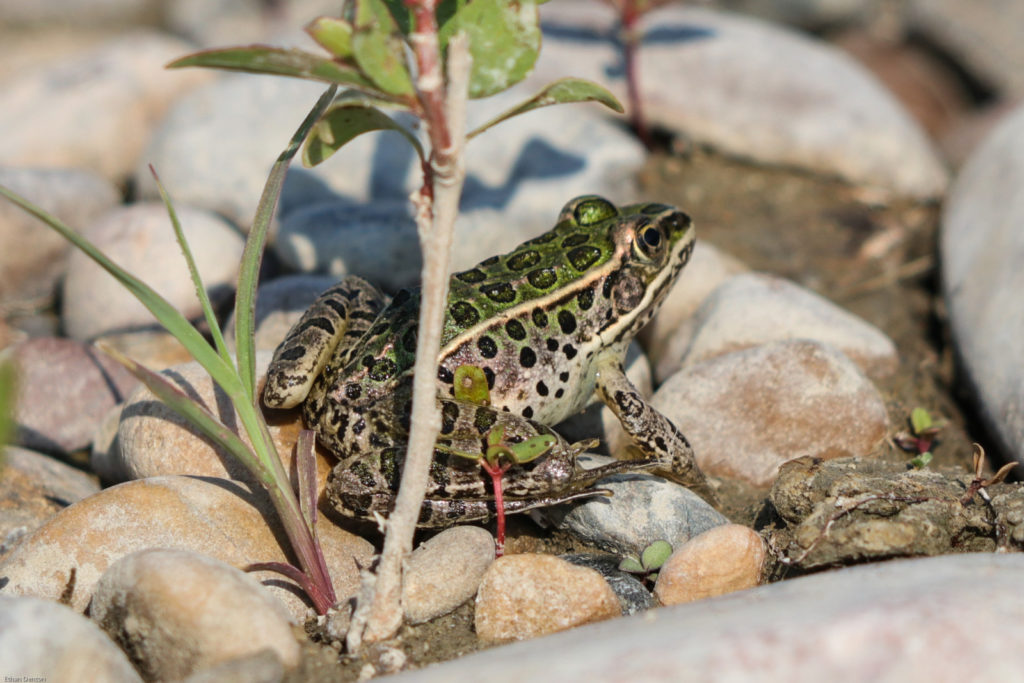
Heading north now, we were constantly watching for Burrowing Owls as well as trying to identify all the LBJs (Little Brown Jobs) on the side of the road. The Suffield area turned out to be very productive, offering up Baird’s and Grasshopper Sparrows, four Loggerhead Shrike and a Say’s Phoebe.
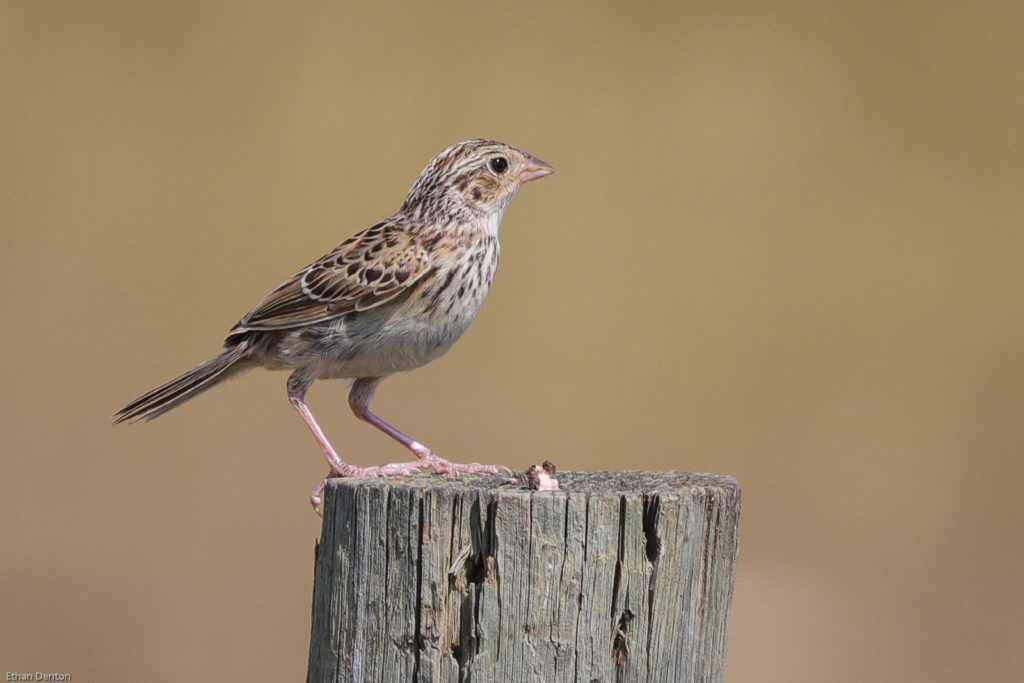
Now the landscape was changing, switching back to the familiar farms, scattered with trees and sloughs of the Calgary area, rather than the open and wild scrub land I had come to love in my short time in the south. Towards the hamlet of Patricia, we pulled over at a tiny pond simply heaving with birds. Half a dozen Pectoral Sandpipers, a Baird’s Sandpiper, Wilson’s Phalarope and two Least Sandpipers were pulled out, along with Avocets, Killdeer and Ring-billed Gulls. The entire wetland was about 20 feet long and 15 wide.
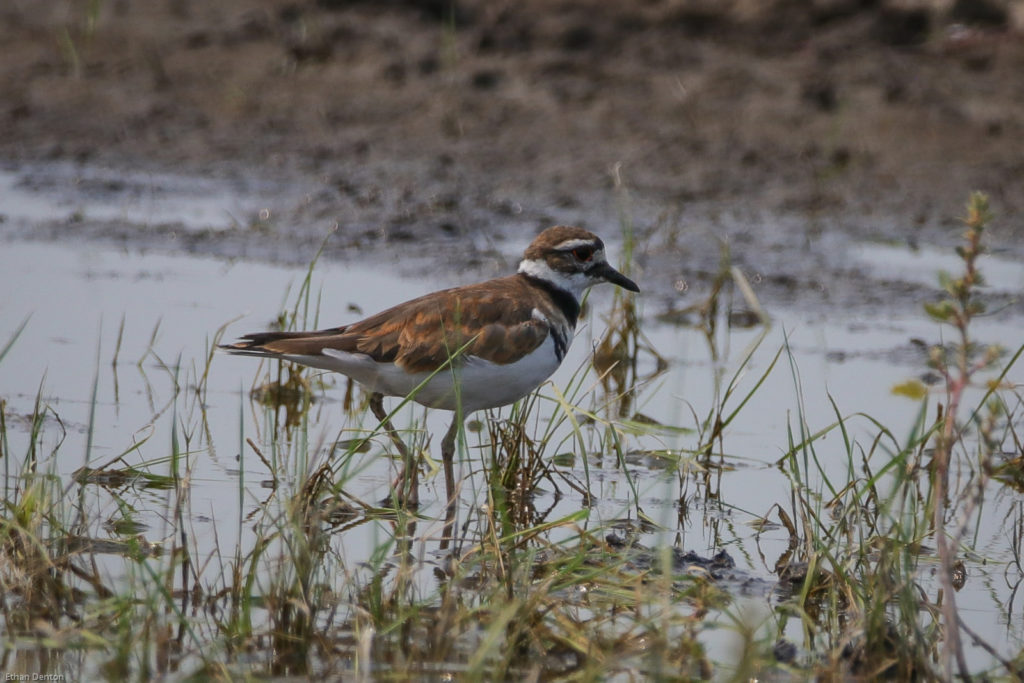
An hour in Dinosaur Provincial Park didn’t turn up much, but we did hear a Ring-necked Pheasant there. Cessford was another excellent shorebird location, with species such as Willet and Marbled Godwit foraging among Killdeer and Short-billed Dowitchers, and 12 Loggerhead Shrike caused comment.
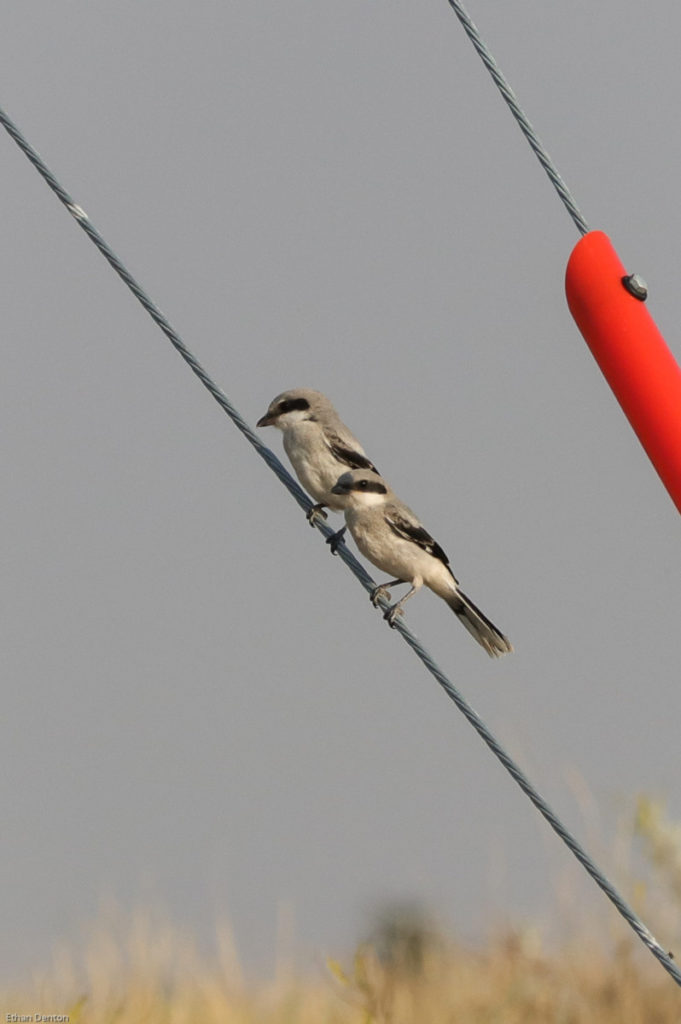
The next place of note was the road running from the town of Dorothy to Drumheller, on which we found Common Nighthawk, American Kestrel and the highlights – two adult Lark Sparrows. We had seen one in the States a few years ago, and an immature already on this trip, but this was by far the best views I have ever had of these beautiful sparrows.
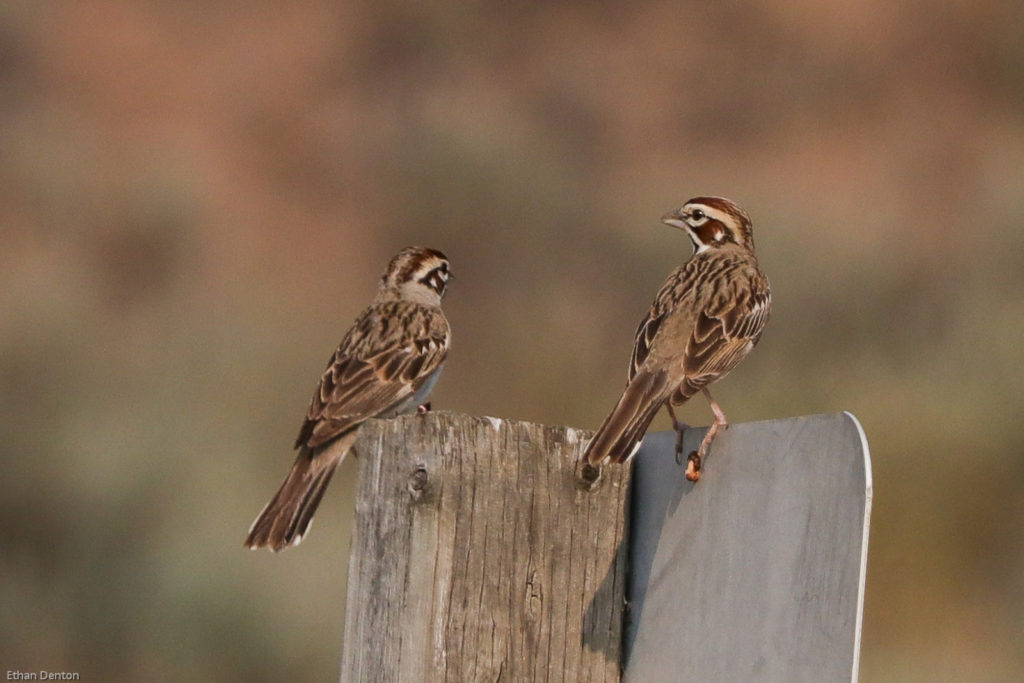
We spent the night in Drumheller, more than pleased with the day’s sightings, before heading out the next morning. With two more main stops left, the trip was almost over, but boy did they live up to the hype! Between Stettler and Rochon Sands, we found two Coopers Hawks, first of the year for me, and numerous Black Terns. Once at the Sands, we ate a casual lunch before heading out to the marsh where we were hoping for Great Egret and American Bittern. Fighting through the cement thick walls of mosquitoes, we were rewarded by an Egret fly-by almost before we had started! This wasn’t the only fly-by, though. Before the Egret, we had found Herons and even some White-faced Ibis flying over.
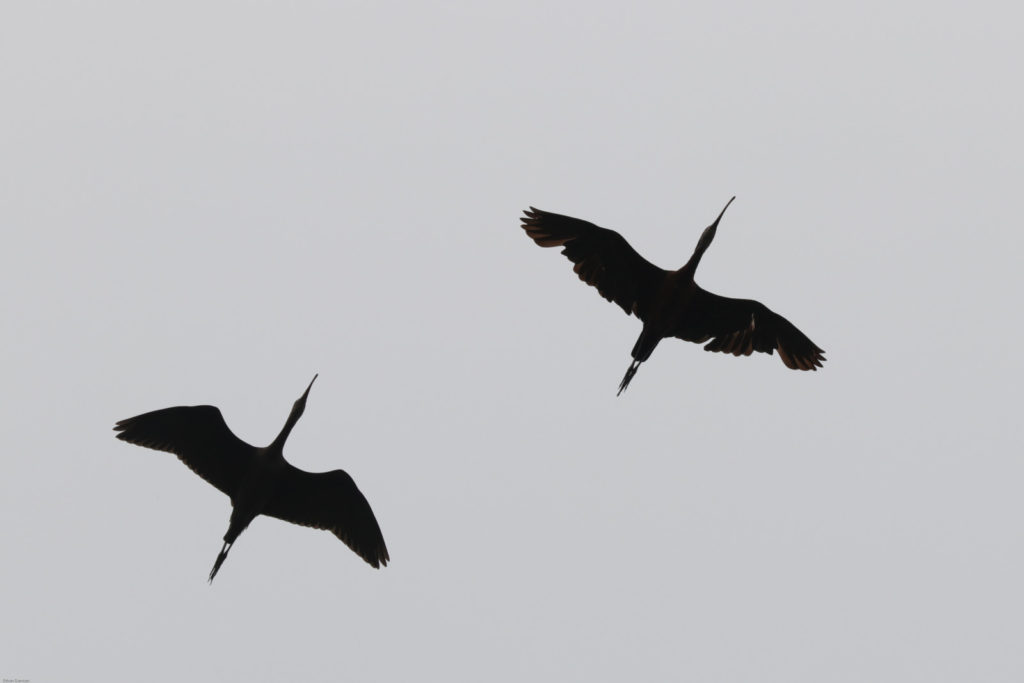
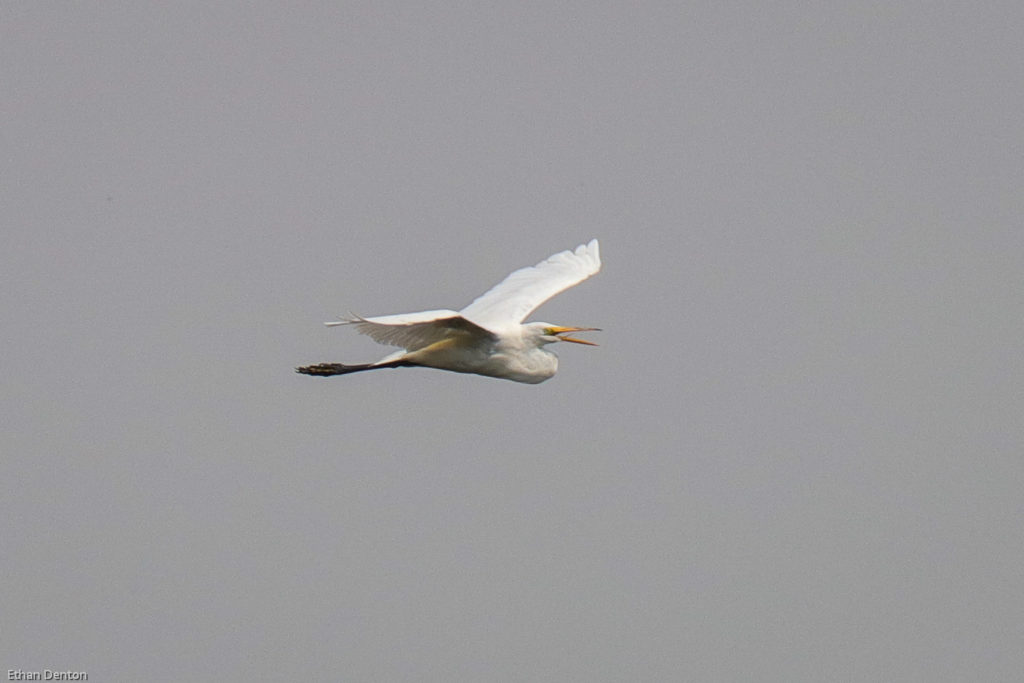
Making our way out of the bug-infested swamp, we decided to try one of the forested pathways after scanning the big lake. There was a big island covered in birds quite a ways out, but the bigger birds were still identifiable through my scope, and it was by this that we found the biggest surprise of the trip. A few Snow Geese had started to be reported, but it was still ridiculously early, so imagine our shock when we discovered a lifer Ross’s Goose! Ross’s are smaller than Snow Geese, and pass through in comparatively tiny numbers mixed in with the huge flocks of Snows. This one was seriously early migrating, and all on its own. We were naturally delighted to see it.
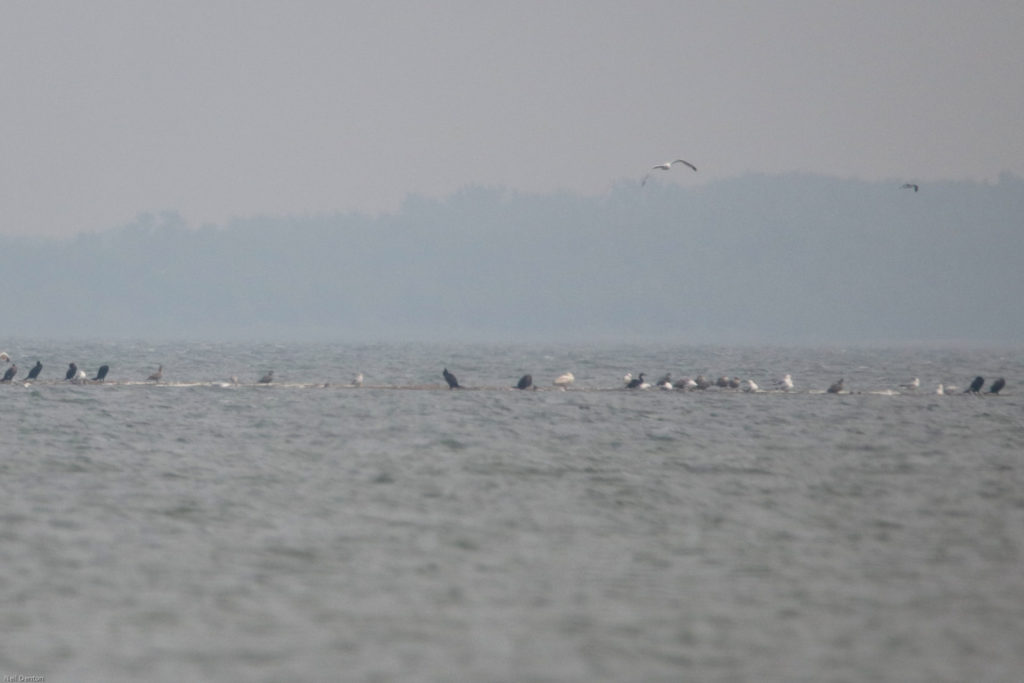
This photo is closer, but worse quality due to the fact that I was digiscoping by the crude means of holding my camera up to the eye-piece of the scope.
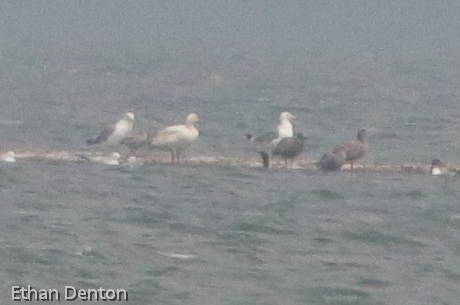
There were also quite a few Black and Forster’s Terns, Red-necked Grebes and Pelicans.
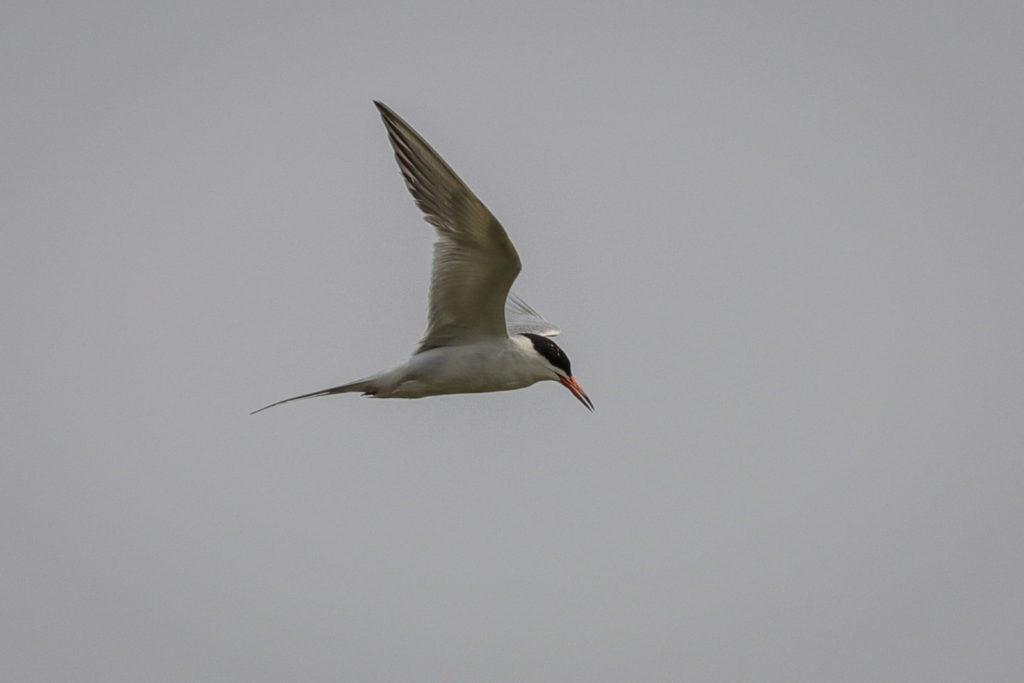
The final Rochon Sands Rarity was an un-photographed, but easily identified, Great-crested Flycatcher. This bird had been previously reported, but was a very nice bird nonetheless. The final stop on the way home was at Ellis Bird Farm, where we found at least 100 Purple Martins, some kingbirds, warblers and American Goldfinches.
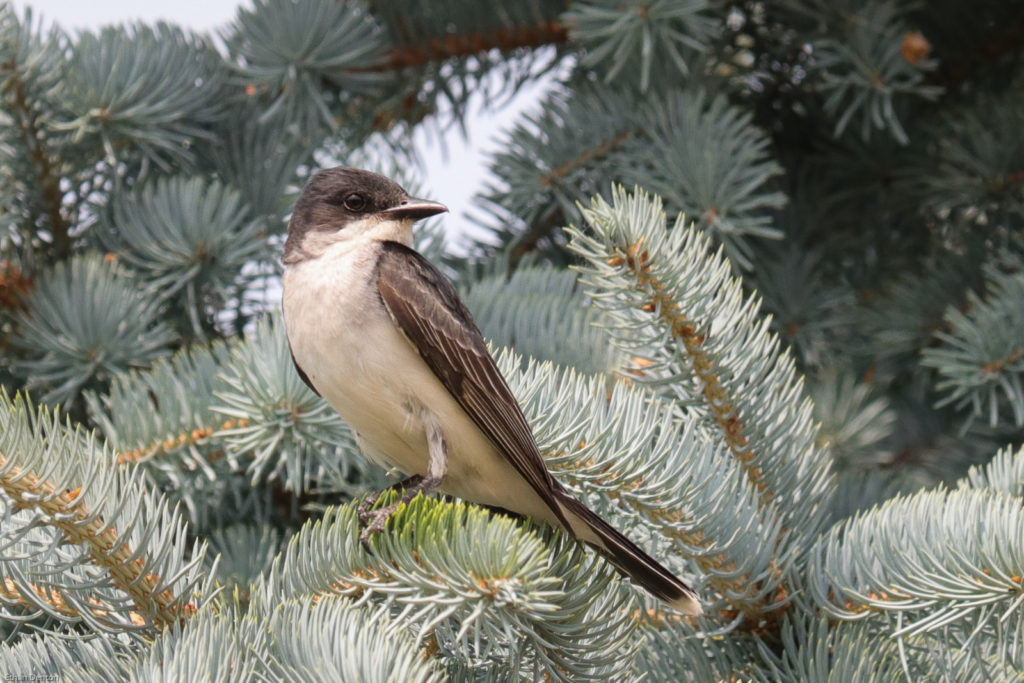
The Martins were splashing and drinking at a pond near the nest boxes, which made some interesting photos, but my favourite isn’t even of a Purple Martin!
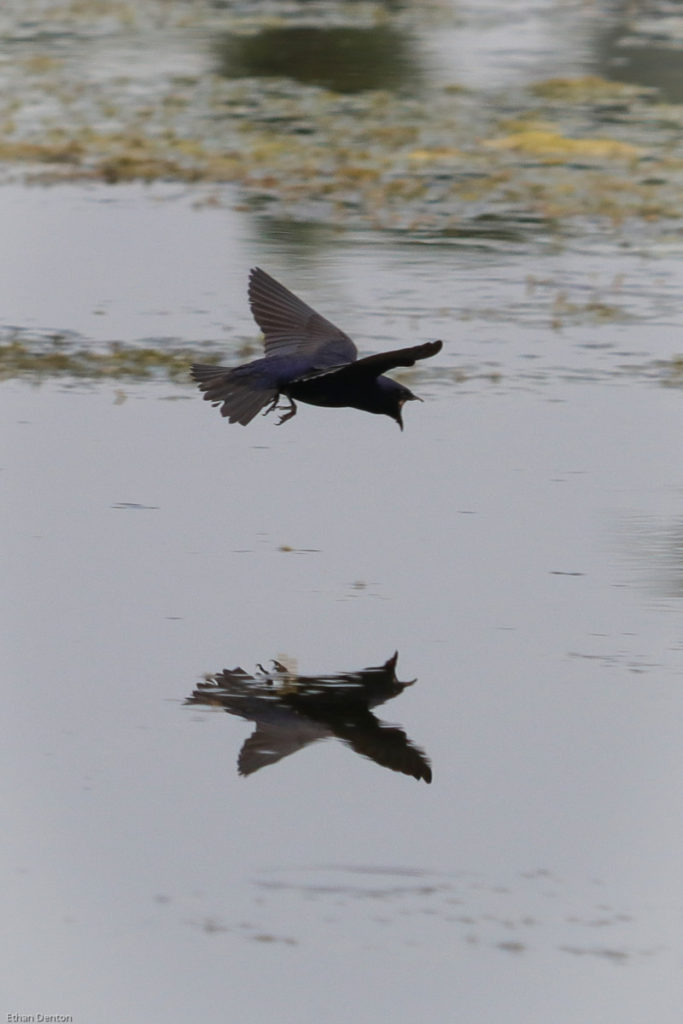
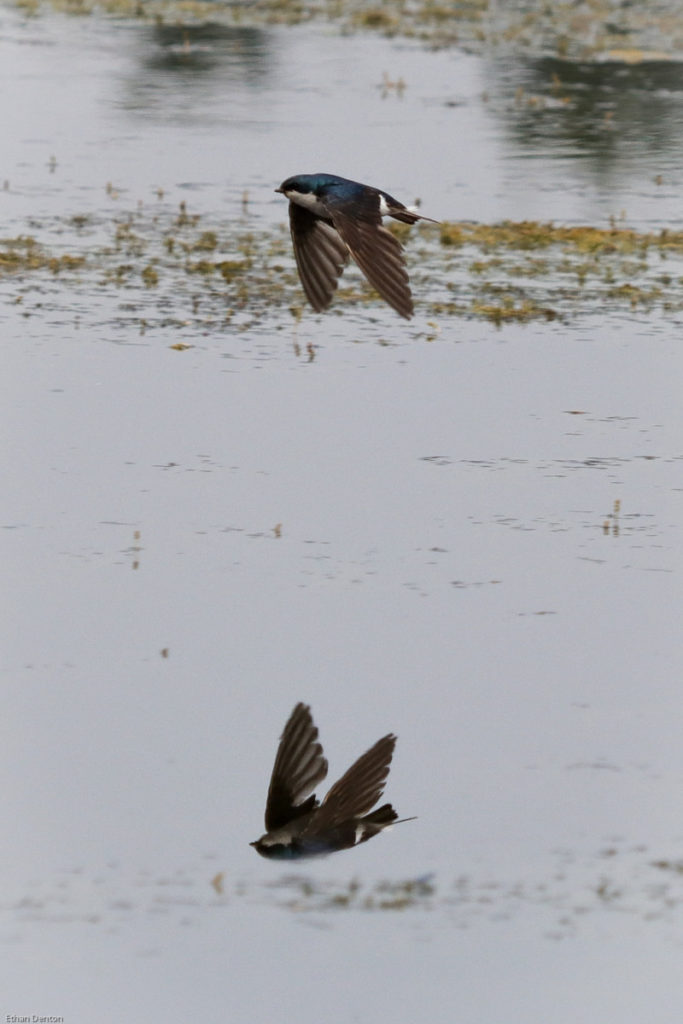
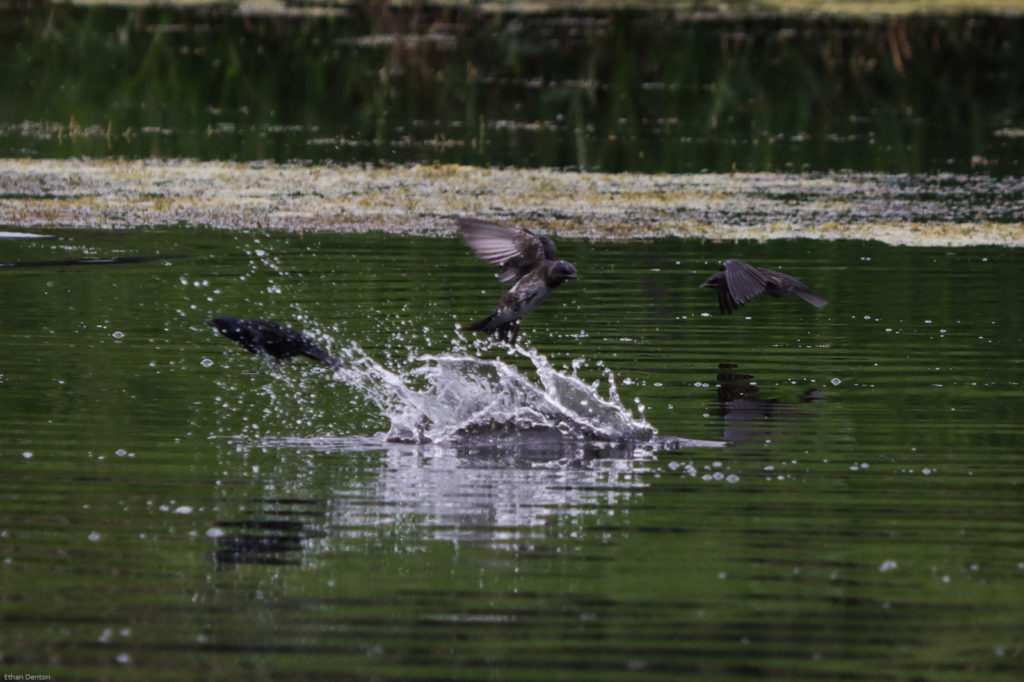
The real target bird here was a bit silly. Having lived in Alberta all my birding life, I really should have seen a Ruby-throated Hummingbird in the province. However, in my eighth year of Alberta birding, I had yet to see one. Ellis Bird Farm seemed to be a good place for them, so we tried it and in the end, succeeded, making Ruby-throated Hummingbird the fourteenth Alberta first in the week.
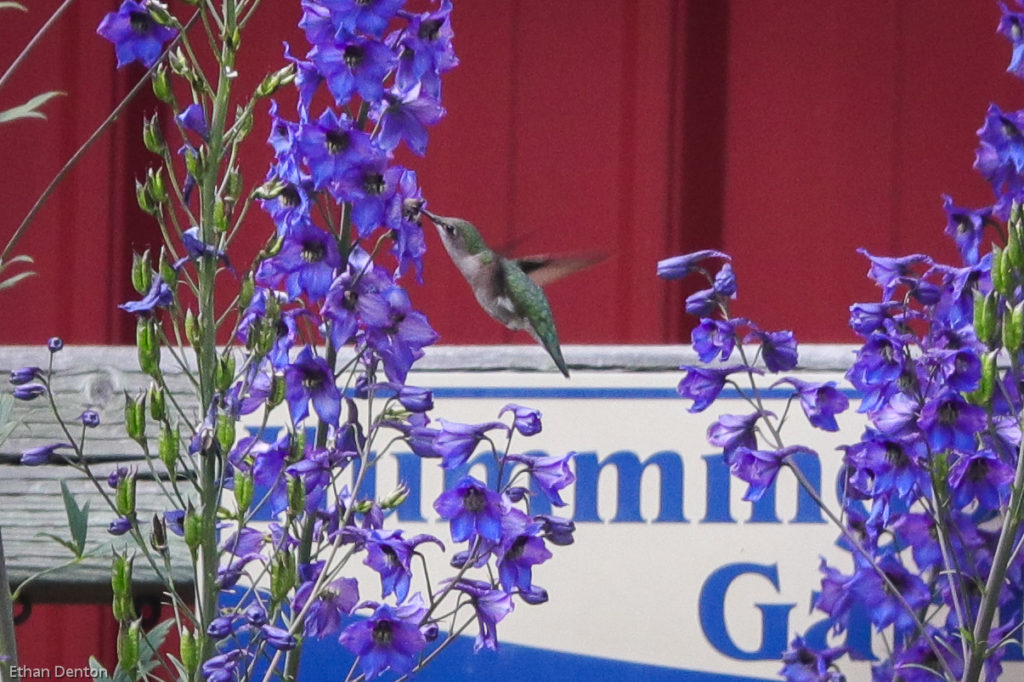
That concluded the trip, and we headed back to the enclosed mountains, where I would spend the next two months sorting through the two thousand photos we had taken in three and a half days. It really was the trip of a lifetime.
See the first post here. For a full Species List, see here. And finally for the trip map, click here.
Thanks for reading!
2018 Calendar Photos
I’ve decided to create a 2018 calendar, filled with my photos. All my photos are Alberta birds (though not all common in Alberta – see the Black-throated Blue Warbler taken in Canmore, AB). The thing is, I don’t know which photos to pick! there are twelve months in the year, plus a cover photo, so I need thirteen picks before the October! Please vote in the comments, with a first pick, second choice, etc. Here are my twenty-four candidates:
NOTE – click on photo to view full screen.
Think I’m missing one that should be in? Feel free to email me at: [email protected]
Thanks everyone!
Feathers on Friday
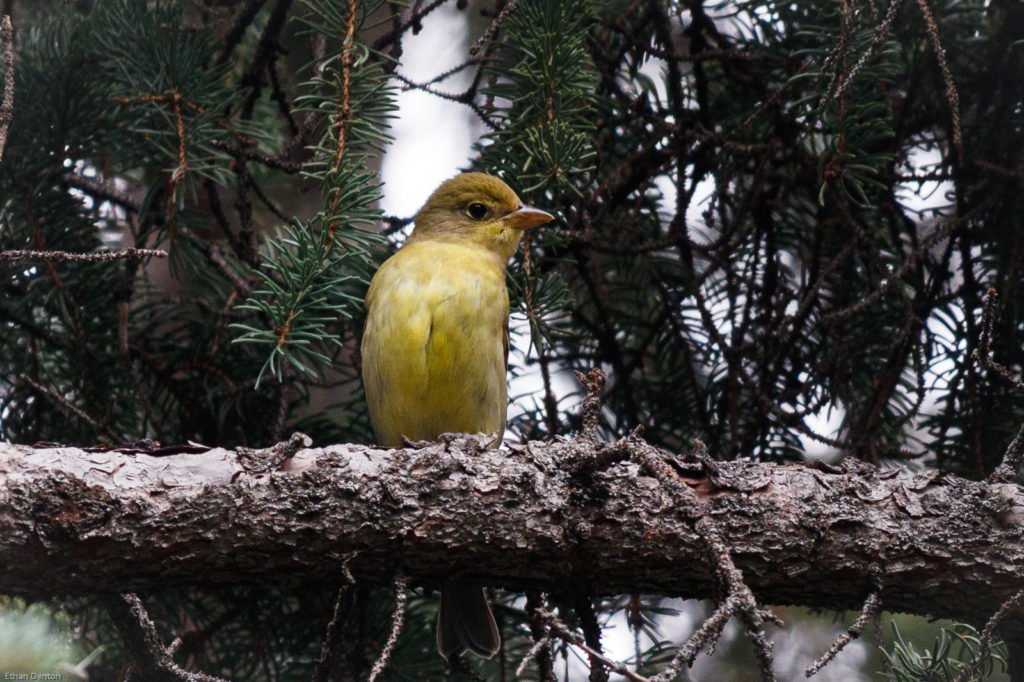
This week’s Feathers on Friday is a female Western Tanager, part of a twenty-five strong flock found in South Canmore. Migration is truly upon us!
